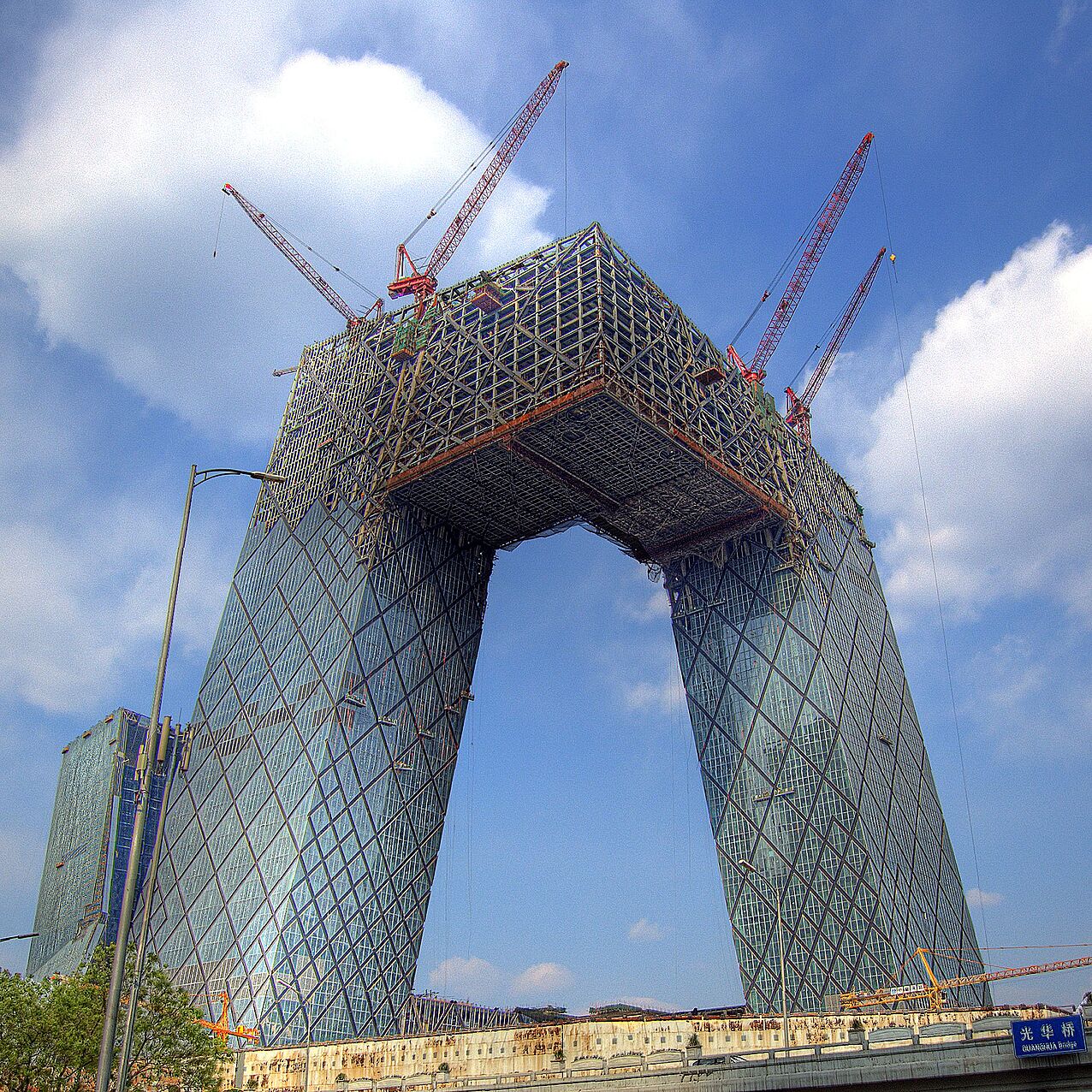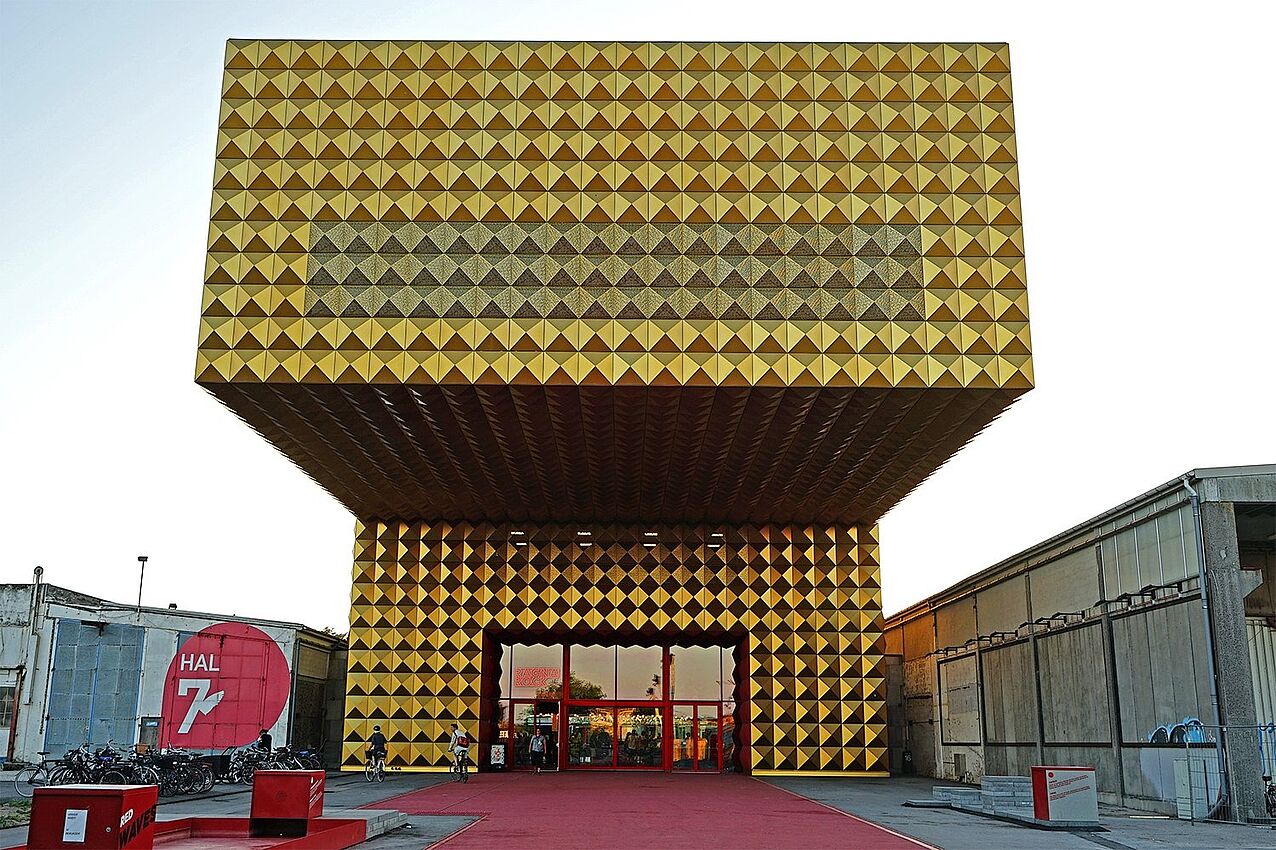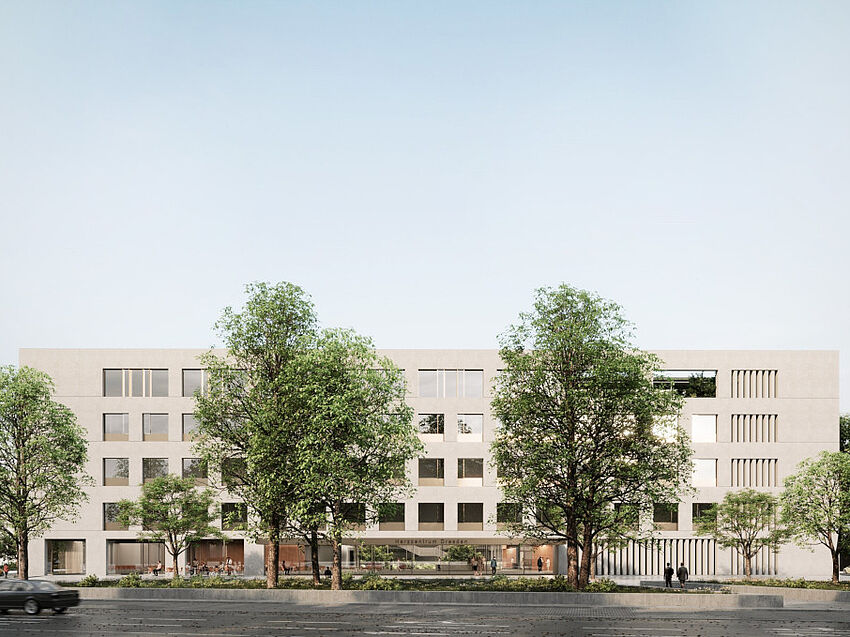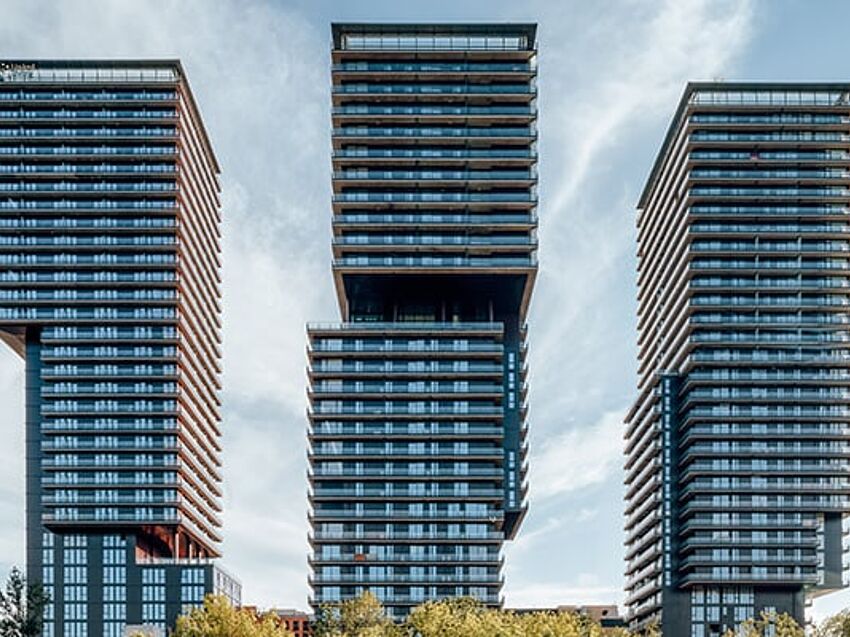Building in existing structures: Ten good reasons for ALLPLAN in architectural planning
Eye-catcher, statement, technical accomplishment: using vast projections, building clients demonstrate their powers and civil engineers their prowess.
As essential as inner qualities might be, the first external impression remains one of the most important. This is especially true for architecture. It is often the first thing one sees of a firm, an institution or simply the unfamiliar. So as not to create a bad impression architecturally, simplicity and discreetness are the watchwords. Though if one wishes to leave a lasting impression or even astound, this certainly requires something prominent or outstanding. In some instances this idea of the “outstanding” is taken quite literally – in the form of enormous cantilevers.
From pragmatic solution to putting on a show
In a historical context, the sections of the building which protrude beyond the base area were originally chiefly used for compensating spatial restrictions on the ground by enlarging the higher storeys. This is similar to how each storey was built to project way out over the one below in medieval timber-frame houses. Projections have not yet lost this function, and others, of course even now. However, from a certain size of these building components, the spectacular clearly comes to the fore.
Boldness and control
Spectacular projections are extraordinary on account of the dramatic effect being able to jut far ahead of the main volume of a building despite all the downward forces. Architecture, which excels in this respect suggests, on the one hand, enterprising boldness, on the other hand, however also power or control (over physical laws), which implies a certain grandeur or excellence. In this regard, extreme projections fulfill a function as a status symbol in a similar way to extreme heights.
Gigantic: CCTV Headquarters
An outstanding example of such prestigious dramatic effect is the CCTV Headquarters in Beijing. The 234-metre high iconic broadcasting centre by Rem Koolhasand Ole Scheeren is probably the world champion in all things cantilever. Two towers leaning towards one another are connected via a single corner building section, soaring at the dizzying height of 162 metres. This joint juts out, believe it or not, 75 metres and takes in up to thirteen storeys.

The structural analysis of this audacious construction posed a few problems for engineers. Eventually, the solution was found in a complex steel skeleton in which the struts or supports come closer together in places where particularly heavy loads occur. To the delight of all the civil engineers this network of steel was not banished to the rear of the glass facade but kept visible on the surface.
Ironic: Ragnarock
The fact that the dramatic effect of extreme projections can also definitely be used in an ironic way is demonstrated by the architects of MVRDV and COBE with “Ragnarock”. This museum for pop, rock and youth culture in the Danish city of Roskilde reflects architecturally the glamorous and also the rowdy, excessive side of the world of Rock ’n’ Roll. In particular a downright crazy cantilever contributes to this, reaching virtually the length of the main volume, in addition to a garish, shiny golden exterior made of anodized aluminium.

Conclusion
Cantilevers with extreme spans as in the aforementioned examples characterize their buildings as something special and rightly garner the layperson’s amazement. In particular the CCTV Headquarters demonstrate that it concerns real accomplishments of modern building technology which would not be possible without complex calculation methods and particularly powerful materials.
![© Photo by Dmitry Fironov (собственная работа / own work) [Public domain], via Wikimedia Commons; CCTV Headquarters CCTV Bejing](/fileadmin/_processed_/f/5/csm_CCTV-Bejing_w_20170110_c672046b16.jpg)



